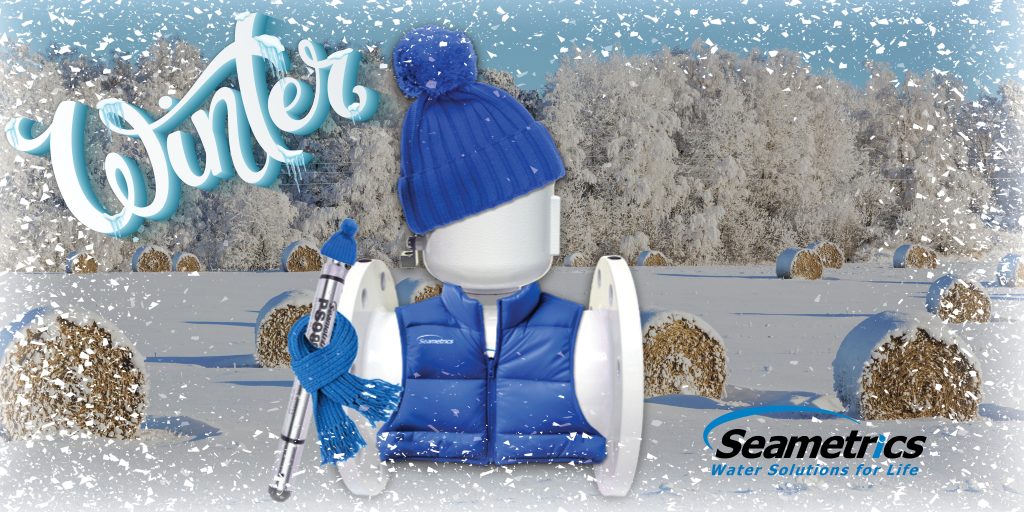
As winter approaches, it’s crucial to safeguard not just yourself from the weather, but also your equipment. One often overlooked threat is the potential damage caused by freezing water. When water freezes without room to expand, it exerts tremendous pressure, upwards of 30,000 psi. Imagine a closed pipe filled with water—when it freezes, the pressure can destroy flow meters and sensors, and may even damage the pipe itself.
Beyond the risk of freezing, winter weather poses other threats to your equipment. Protecting electronic devices from moisture intrusion is paramount. Even on seemingly dry days, airborne moisture can condense in cold conditions, leading to water inside electronic housings. On wet days, driving rain can penetrate seemingly well-sealed housings if precautions aren’t taken. Regular inspections before inclement weather can ensure proper sealing, prolonging the life of your investments.
While driving rain is problematic, consider areas prone to seasonal floods. Sites that seem safe during dry weather may be underwater periodically. Some equipment is rated for total immersion (IP68) if all openings are properly sealed, but most are rated no higher than IP67. While IP67 withstands water sprays, heavy rain, and short-term immersion, it’s not designed for extended periods underwater in floods. Additionally, be mindful of the force of moving water. Installation sites near normally calm creeks or rivers may experience violent floods during storms. In such locations, temporary removal of equipment may be more cost-effective than risking its survival in extreme weather conditions.
Caring for Your Water Level and Water Quality Sensors During the Winter Season
As temperatures plummet and frost sets in, the care of your water sensors becomes paramount. Freezing conditions pose a serious threat to sensor functionality, potentially damaging their sensitive components and cables. Let’s delve into the essential steps to safeguard your equipment during this downtime.
Understanding Winter’s Impact on Sensors
While many sensors are designed to endure freezing temperatures, they’re not invulnerable to the perils of ice formation. When water freezes, it expands, exerting immense pressure on sensor chambers. This expansion can distort or harm sensing elements and cables, risking severe damage.
Seametrics provides freeze protection kits for select sensors, aiding in minimizing damage to sensing elements. However, it’s prudent to relocate sensors from areas prone to freezing to prevent any potential damage.
Preparing for the Season Ahead
Utilize this downtime to service and fortify your equipment for the upcoming season. Don’t simply stow away your sensors; a proactive approach now can prevent complications later.
· Data Retrieval: Prioritize retrieving and securely storing sensor data before any servicing. Preserving this information serves as a crucial starting point.
· Cleaning: Over time, sensors accumulate buildup. Immerse sensor bodies and cables in soapy water, followed by a rinse in distilled water to ensure thorough cleansing. Refer to the sensor manual for specific cleaning instructions.
· Damage Inspection: Thoroughly examine sensor bodies and cable pins for signs of corrosion. Corrosion warrants a review of water chemistry and sensor material compatibility for future deployments. Replace corroded cable connectors promptly.
· Logging and Batteries: Switch off data logging to conserve battery power during shelf storage. Check and, if necessary, replace batteries to ensure optimal performance in the next season.
· Calibration: Post cleaning and battery replacement, recalibrate sensors to guarantee accurate readings. Promptly address any malfunctioning sensors by contacting your distributor or Seametrics for necessary parts and repairs.
· Storage Guidelines: Remove batteries from long-term shelf-stored instruments. Coil cables neatly to avoid excessive bending that may damage conductors. Store sensors in clean, dry environments, adhering to specific storage requirements outlined in respective manuals.
Planning Ahead for Next Year: After servicing, assess the future needs of your equipment. Consider calibration requirements, spare parts, necessary supplies, and training requirements for your team members. Evaluate potential additions, such as remote telemetry platforms, to enhance monitoring capabilities.
By adhering to these steps, you fortify your equipment against winter’s harsh conditions and set the stage for a successful and hassle-free deployment when the monitoring season returns. Winter downtime becomes an opportunity for proactive maintenance, ensuring your sensors are primed and ready for action.
Need more support or information? Contact Seametrics at Info@seametrics.com or find your local dealer here
